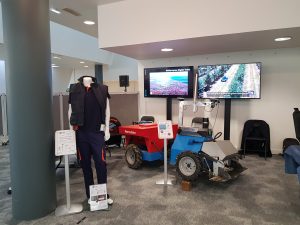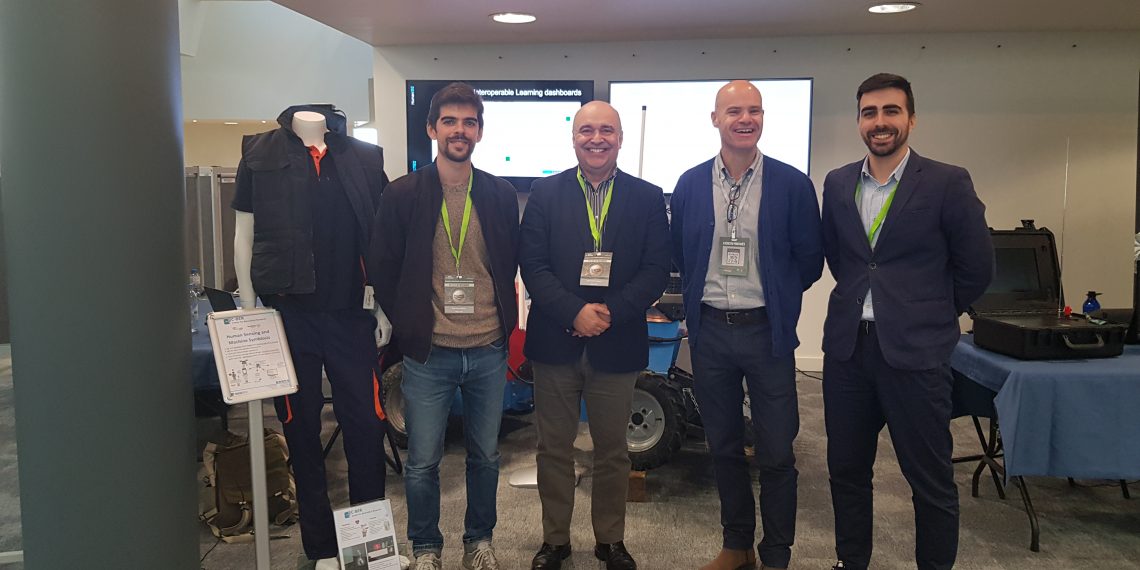“Innovation and Technological Modernisation in the Army” was the motto for the second edition of CEMTEx, an event promoted by the Army, which took place on November 22 and 23, at Taguspark (Oeiras) – with INESC TEC participating in the event yet again.
Organised by the Army’s Experimentation and Technological Modernization Center (CEMTEx), this initiative welcomes companies and institutions in the Defence Technological and Industrial System, including the research centres part of the National Scientific and Technological System; this initiative aims to disseminate research, development and innovation initiatives and projects relevant to the sector.
According to António Gaspar, head of INESC TEC’s TEC4Partnerships, “the Institute’s presence at these events is important to foster partnerships with tech-based companies, boosting the transfer of our R&D results to the industry”. Moreover, he claimed that the “close relationship with the Army as an end user allows us to validate and evaluate the potential of our solutions”.

Considering the core of the event, INESC TEC presented some technologies with potential for application in the Army. One of them is the Modular-E, an autonomous modular terrestrial robot that, besides supporting the maintenance of agricultural land, prevents the use of heavier machinery in said tasks, thus avoiding soil compaction and promoting a more efficient and sustainable precision agriculture. The added value of this equipment relies on modular composition, allowing users to adapt it to specific needs with no significant costs. This robot, developed by the TRIBE laboratory – part of INESC TEC Centre for Robotics in Industry and Intelligent Systems (CRIIS) – shows high maturity and great potential to be applied to Army activities, e.g., demining, logistical support, and surveillance.
Concerning the Human-Centered Computing and Information Science (HumanISE), INESC TEC led some demonstrations of immersive training software through virtual reality, and a digital twin proposal using immersive technologies. In these environments, it is possible to collect the data locally and generate them in situ, providing the users with a follow-up experience (training or simulation, for example) as complete as possible, which is particularly relevant in military training.
Finally, the Centre for Biomedical Engineering Research presented some of the work developed in terms of mobile and wearable monitoring of professionals’ health – essentially first responders and other hazardous jobs. The objective is to monitor these professionals in real time, while they work on the ground, to intervene in a timely manner in case of danger. The application to the military field – particularly in soldier sensing – has generated some interest, with a demonstration in the exercise ARTEX 23 earlier this year.
The event programme also included panel discussions on topics like physiology applied to operational human performance, security, and evaluation in military operations; debates on technological development opportunities; robotics challenges and financing programmes, as well as bilateral meetings between companies.
António Gaspar (TECPARTNERSHIPS), Fernando Cassola (HumanISE), Carlos Ferreira (TEC4HEALTH) and André Aguiar (CRIIS) attended the event.
The researchers mentioned in this news piece are associated with INESC TEC.




 News, current topics, curiosities and so much more about INESC TEC and its community!
News, current topics, curiosities and so much more about INESC TEC and its community!